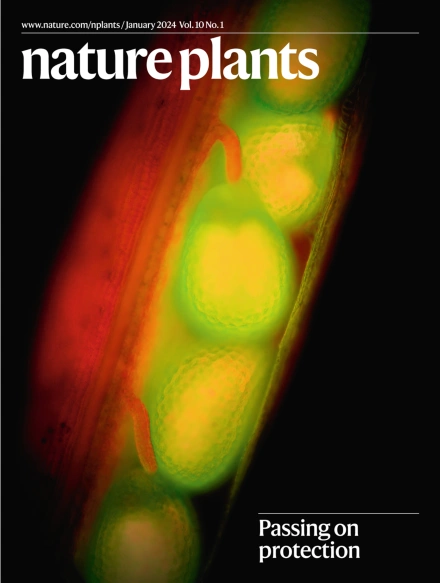Septoria tritici blotch resistance gene Stb15 encodes a lectin receptor-like kinase
IF 15.8
1区 生物学
Q1 PLANT SCIENCES
引用次数: 0
Abstract
Septoria tritici blotch (STB), caused by the Dothideomycete fungus Zymoseptoria tritici, is one of the most damaging diseases of bread wheat (Triticum aestivum)1 and the target of costly fungicide applications2. In line with the fungus’s apoplastic lifestyle, STB resistance genes isolated to date encode receptor-like kinases (RLKs) including a wall-associated kinase (Stb6) and a cysteine-rich kinase (Stb16q)3,4. Here we used genome-wide association studies on a diverse panel of 300 whole-genome shotgun-sequenced wheat landraces (WatSeq consortium5) to identify a 99-kb region containing six candidates for the Stb15 resistance gene. Mutagenesis and transgenesis confirmed a gene encoding an intronless G-type lectin RLK as Stb15. The characterization of Stb15 exemplifies the unexpected diversity of RLKs conferring Z. tritici resistance in wheat. Stb15 provides resistance to Septoria tritici blotch in wheat and encodes a G-type lectin receptor-like kinase. The three cloned Stb genes, which are effective against different pathogen isolates, encode diverse receptor-like kinases with extracellular domains potentially involved in sugar binding.


稻瘟病抗性基因Stb15编码一种凝集素受体样激酶
稻瘟病(Septoria tritici blotch, STB)是面包小麦(Triticum aestivum)最具破坏性的病害之一,是昂贵杀菌剂应用的目标。与真菌的外胞体生活方式一致,迄今分离到的STB抗性基因编码受体样激酶(RLKs),包括壁相关激酶(Stb6)和富含半胱氨酸的激酶(Stb16q)3,4。在这里,我们对300个全基因组散射测序的小麦地方品种(WatSeq consortium)进行了全基因组关联研究,确定了一个包含6个Stb15抗性基因候选基因的99 kb区域。诱变和转基因证实编码无内含子g型凝集素RLK的基因为Stb15。Stb15的特性说明了小麦中具有抗小麦小黑麦病稻瘟病抗性的RLKs出乎意料的多样性。
本文章由计算机程序翻译,如有差异,请以英文原文为准。
求助全文
约1分钟内获得全文
求助全文
来源期刊

Nature Plants
PLANT SCIENCES-
CiteScore
25.30
自引率
2.20%
发文量
196
期刊介绍:
Nature Plants is an online-only, monthly journal publishing the best research on plants — from their evolution, development, metabolism and environmental interactions to their societal significance.
 求助内容:
求助内容: 应助结果提醒方式:
应助结果提醒方式:


